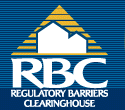Home from the Office: Adapting
Underutilized Office Parks for Housing
The cost of building affordable housing is often equivalent to building market-rate housing. In both cases, development costs can be significantly higher when new infrastructure, such as roads, drainage, and sewers, is necessary to accommodate growth. In a study written by Westchester County, New York's Planning Department, Office Park Housing: Adapting Underutilized Office Parks for Housing, county officials evaluate potential sites with existing infrastructure where affordable housing can be created with nominal financial and developmental impact on surrounding areas.
The Office Park Study
In 2004, Rutgers University released the Westchester County Affordable Housing Needs Assessment report, projecting that the county’s affordable housing demand will reach 19,083 units by 2015. In response, the county conducted a study to assess the feasibility of building affordable housing in underutilized office parks. "Creating affordable housing on unused office park land is a creative new way to address our affordable housing needs," said County Executive Andrew Spano. "It's also an example of smart growth and green development through the reuse of under-utilized land."
According to the study, several factors can impede affordable housing production, including high land costs, increased traffic congestion, low-density zoning, and environmental impacts. For this reason, the study evaluated five sites located within Westchester County, which contained ample parking space during peak hours, suitable infrastructure and utilities, adequate roadway systems, and zoning approved for high-density development. The goal of the study is to promote mixed-use developments that provide affordable housing opportunities for young professionals or empty nesters. “The report [encourages] local governments to look at similar site(s) to adapt for residential and mixed-use development. There are many sites where the proposed guidelines would apply in the county, and indeed, in this part of the nation," said Westchester County Housing Director Deborah DeLong. The county aspires to create vibrant mixed-use corridors with housing, retail, and offices that stimulate pedestrian activity and revive these scattered developments.
Conclusion
Local officials must overcome several obstacles when proposing new development. For this reason, Westchester County has prepared a report that addresses innovative ways to encourage affordable development in areas where new construction will minimize adverse impacts to neighboring developments. The study has opened lines of communication between local governments, county officials, and office park landowners. "The bottom line is that the local government must determine what fits locally. The report gives broad guidelines as a place to start," said DeLong.
Previous Article Search Archives
|


